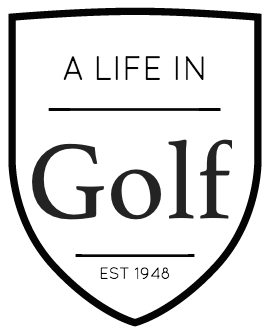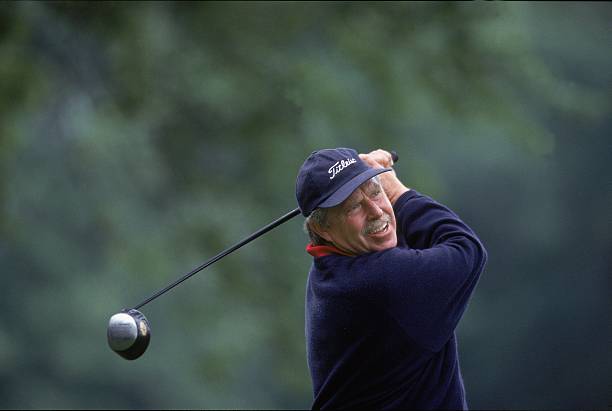The Unusual Career of Bill Brask
In more than fifty years of being around the game, I have known many fantastic players. Some, like Tom Lehman and Tim Herron, are well known. Bill Brask was also a great player but not well known. Few know about him because his accomplishments were in Asia, Australia, New Zealand, India and South Africa.
The friendly, well-liked Brask, grew up in San Diego, with a father in the Navy. He learned the game at public courses "taking group lessons with 20 other kids at $1 per lesson". Gene Littler, Billy Casper, Phil Rogers and Mickey Wright would hold clinics for younger golfers with Bill attending.
A high school teacher and former Gopher golfer, Ken Mack, convinced him to come to Minnesota because "Les Bolstad would help my game and I would get a good education. It was one of the best decisions I ever made."
Distant relatives, Earl, Stan and Mel Larson took him under their wing. "I immediately started playing golf at Hazeltine with good players like Gene Christensen, Warren Rebholtz and Reed Mackenzie along with Federal Court Judge Earl Larson."
While at the University he was an All American in 1967 and 1968. He won the Big Ten in 1968 and finished third in the NCAA championship in 1968.
As a younger college player, I marveled at his chipping and putting. "He could get it up and down from a cement mixer," an old pro said to me one day as we watched Bill work his magic.
After a year in the Army Reserve, he went to the PGA Tour School in the fall of 1969. "How many cards are going to be granted?" Bill asked Joe Dey, the Commissioner of the PGA Tour.
"I don't know. It depends on how you guys play," was his answer. Twelve cards were granted and Bill got one of them.
He caught the eye of Johnny Miller's manager, Ed Barner, who encouraged him to go to Australia. It would be the best decision of his career. Barner helped him secure a sponsor, Wilson, and entry into the Australian tour events.
Australia is part of the Royal and Ancient Golf Club of St. Andrews, the governing body in golf in all countries except the US. The USGA administers golf in the United States, while the R & A covers the rest of the world. Until 1990 it was within the rules of the R & A to play a smaller ball than the ball played in the US. The "small ball" was 1.62 oz in weight and 1.62", in size. The larger American ball was 1.68 oz and 1.68".
"I never hit it better than with the small ball," Bill said. "There was a ball called the B-51 Fireball that I loved. It was hot. I would come back to the US and the ball would feel so heavy."
Bill Brask is one of the two greatest putters I have ever seen. Mike Morley being the other. The smaller ball would work to Bill's advantage on the green as it would be easier to make putts. While Bill may have believed he hit it better with the smaller ball, my guess is he putted better also.
Bill played the PGA Tour starting in 1970 at the LA Open. "I made the cut and was paired with Arnold Palmer on Saturday. My first PGA Tour event and I am paired with Arnold. I was nervous as a cat. I decided I would walk right up to him on the first tee and introduce myself."
This was right at the peak of Arne's career and the crowd was enormous around the tee. "When I walked up to him, I told him I was from San Diego and a whole bunch of my friends had come up to watch me. He loved it."
"I got off to a good start but on the 7th hole I had a disaster, hacking it down the rough, hitting a horrible chip shot. It was terrible. By this time I was just trying to stay out of his way. Arnold came over to me and said, 'It looks like you are speeding up. Just slow down, don't worry about me.' It was great of him to do that. I calmed down and ended up with a good round. He was great to play with."
His first start on the PGA Tour would be his highest finish in the US. He made enough money to keep his card in '70, '71, and '72, but never high enough to get into the top 64 to be exempt. He always had to Monday qualify, making it difficult to plan a schedule and travel.
However, it was on the Australasian Tour that Bill reached his peak. Playing throughout the '70s and '80s, Bill won eight times around the world. Lee Trevino reportedly called him 'the king of the small ball'. During his inaugural trip he finished second to Gary Player in the Royal Canberra Open where he was again paired with Arnold Palmer.
His victories were against players the quality of Jack Nicklaus, Arnold Palmer, Greg Norman, Bob Charles, and the great Australian player, Kel Nagel. "Kel Nagel was the finest gentleman I have ever played golf with. The best player I may have ever seen was Billy Dunk. He was an Australian and didn't really come to the US."
Interestingly, I caddied for Kel Nagel in the 1964 St. Paul Open. I had the same impression of the 1960 Open Champion, a wonderful person.
In 1975 Bill won twice on tour in New Zealand and was second to Jack Nicklaus in the Australian Open. Two wins and a second in 15 tournaments, quite a record. He was a dominant player in the mid-70s in Australia and New Zealand.
As a result, he finished second in the Order of Merit (their money list), earning an exemption into the 1975 Open at Carnoustie. "I had a small bag with me at the Open. I didn't have a caddie when an older gentleman approached me and asked if he could work for me. His name was Asford Maidment but they called him 'Chingy'. He was pretty old. I told him I could not afford to pay him much but he saw my small bag and wanted to be part of the tournament. He had caddied for Alf Padgham, the 1936 Open Champion. He was a great caddie and I made the cut."
He was exempt again for the 1976 Open at Royal Birkdale but failed to make the cut. His final appearance was at the 1980 Open at Muirfield where, after a Monday qualifying, he made the cut in the event but finished down the list.
After 1976 his time on the PGA Tour was about over. He had three US Open appearances but no finish on tour higher than his first start in LA in 1970. However, his play outside the US remained strong as three of his eight wins were after 1976.
In 1984 he beat Greg Norman, the defending champion, to win the Hong Kong Open by two shots. "He was a good friend of mine at the time and had a great last round. I told him I was glad it was only four rounds because I couldn't beat him if we had to play more."
"With my playing career about over in the US and only playing for fifteen weeks each year down under, I took a job at Pauma Valley in San Diego in 1978. I was there for two years until coming back to Minneapolis where I was at Olympic Hills GC for 18 years."
I played some on the European Senior Tour with three runner-up finishes. I was seventh on their Order of Merit in 1999.
"I played several times with Gary Player. Once in the early 70s he walked on the tee and announced there was a death threat on his life but I should not be worried. Scared me half to death. Typical Player to try to get in your head. In the 2000 Senior PGA I was paired with Nicklaus and Player. They were very competitive with each other. I finally asked the caddie about it. He said it happens every time they play together."
Bill has a lot of respect for Jack Nicklaus. "I have a son with diabetes. I would bring autographed items back from tournaments to sell at auctions to raise money for a hospital. After the round with them, I asked Gary and Jack if they would each sign a hat I provided. Gary signed. Jack then took the hat off his head saying, "You'll get a lot more money if I give you this hat" which he signed. He didn't have to do that. He was great."
Bill played the Champions Tour in 2000 and 2001, finishing in the top 50. His play in 2002 faded and he came back to work in Minnesota.
For the past 15 years Bill can be found teaching at the Edina Country Club. The history buff collects golf books and friends.
Bill Brask's career is nearly a secret in the USA. To those down under he was a household name in the '70s and '80s. He had one of the finest short games and was one of the best players I have known in A Life In Golf.






